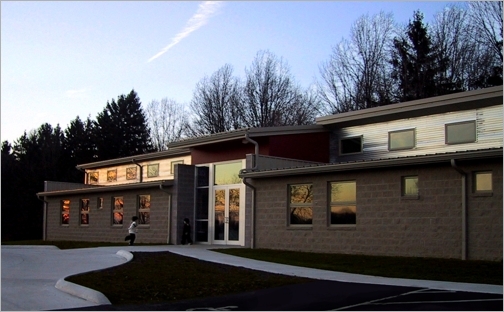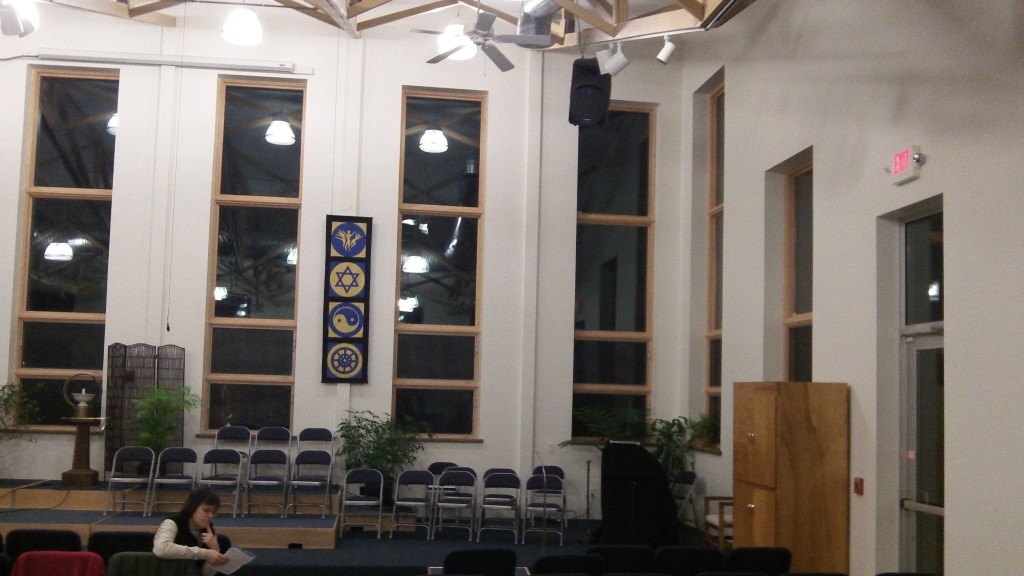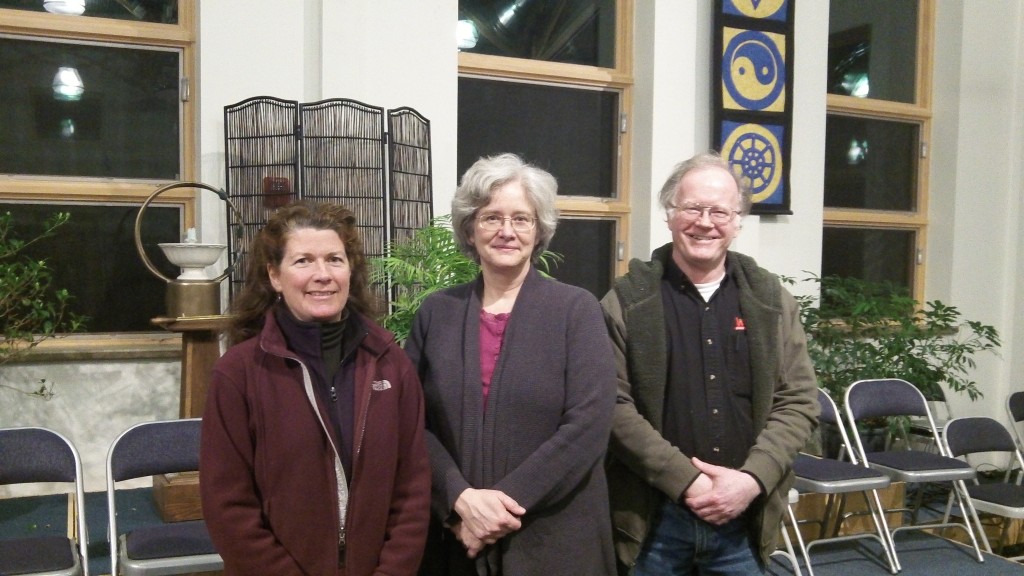
The Unitarian Universalist Fellowship of Wayne County hosted a forum on the ethics of Earth stewardship, entitled Climate and Agricultural Ethics: Winds and Seeds of Change. This unique community lecture featured Calvin DeWitt, an ecologist and author, and David Kline, a local Amish farmer and author. Inspiring a discussion of how to be environmental stewards in the spirit of one’s faithful calling, both presenters spoke of the responsibility of caring for the earth—“as the earth serves us, we must return with service of our own”. When asked if he has seen changes on his farm due to climate change, David Kline noted, “I am an observer of things, and I can say things are different”. Both challenged the audience to “do what you can where you are—make the changes in your own setting; be faithful, not successful.”
The Unitarian Universalist Fellowship of Wayne County (UUFWC) has clearly taken on this challenge. As the first Gold Certified LEED (Leadership in Energy and Environmental Design) house of worship in the United States, members live out the UU Seventh Principle to respect the interdependent web of all existence. Their environmental stewardship was apparent in 2006 when their new building received the LEED Gold certification, accepted as the benchmark for buildings that are environmental friendly and healthy. As their UUFWC’s website says:
“Most of us are aware of the enormous environmental challenges our world faces today. Global climate change, resource depletion, pollution, and species extinction are just a few of the concerns that trouble us, both as individuals and as Unitarian Universalist congregations.”


Members Karen Skubik, Anne Wilson, and Tom Gross, who were active in the decision-making process to pursue the LEED Certification, credit the collaborative spirit between the architectural design firm, the LEED consultant, and the congregational members. “This was a congenial project, and that makes all the difference,” says Tom Gross. Anne Wilson notes, “We were close to LEED certification without really trying. We decided to go the last little bit because it is important to be environmentally sustaining and responsible.”
Their building expresses the interdependent web of all existence through respect for people, for place, and for the future:
Respect for People:
The lower windows and every other high window are operable, allow for cross ventilation and minimizing the need for heat/AC during transitional times of the year.
All paints finishes, carpeting and cabinet plywood used were low VOC (volatile organic compounds) emission productsAll paints finishes, carpeting and cabinet plywood used were low VOC (volatile organic compounds) emission products
A Green Housekeeping Program and Recycling Program are used
No smoking is permitted in or near the facility
Designed to make use of the sun for passive solar heat gain and ambient lighting throughout the space
All spaces have views to the outside
A shower stall and bike rake facilitates encourages riding bikes to services and events
Fixtures for outside lighting are “Night Sky”, with no light spillage past the property lines.
Respect for the Future:
During construction, all construction waste was taken and sorted, with 87% recycled.
Materials used in construction contained 7% recycled content.
High efficiency compact fluorescent and fluorescent tubes provide the majority of the interior lighting
All rooms are equipped with multiple lamp settings to optimize efficiency.
The Heating, Ventilating and Air Conditioning system is 32.4% more efficient than a typical system. No ozone depleting refrigerants are used in the system
Electric power is purchased through a wind power purchasing program. The program creates demand for alternative energy and encourages further development of additional capacity.
Respect for Place:
The lower windows and every other high window are operable, allow for cross ventilation and minimizing the need for heat/AC during transitional times of the year.
A 1,500 gallon cistern (buried) is part of a system that catches rainwater, filters it, and then uses it to flush toilets and irrigate plants.
Plantings are planned to be drought resistant
Parking made up of white concrete rather than asphalt
The Fellowship continues to explore ways they can reflect the web of interconnection. An alternative energy committee is exploring methods of integrating renewable energy sources. Volunteers pick up trash in an Adopt-A-Highway program; ink cartridges are collected for reuse; cell phones and accessories are collected. Other projects being discussed for the future include:
A Green (planted) Roof
Incorporation of a Prairie restoration project
Congregational recycling and composting project
Solar and wind power generation on site
Floor coverings made from low hazard materials.
The Fellowship continues to explore ways they can reflect the web of interconnection. An alternative energy committee is exploring methods of integrating renewable energy sources. Volunteers pick up trash in an Adopt-A-Highway program; ink cartridges are collected for reuse; cell phones and accessories are collected. Other projects being discussed for the future include:
Clearly, this congregation is following the challenge to “do what you can do in your setting.” Their concern and care for the environment and living that value provides an important foundation for their children and the future of their community.
As The Rev. Elaine Strawn reflects:
“Our commitment to our values has given the church a more public face. “It has brought more people to us. Many are interested in aligning themselves with a community that values the environment.”
If your congregation is interested in exploring ways your house of worship can be more energy efficient, conserve energy, or use renewable energy, contact Ohioans for Sustainable Change Energy Technical Consultant, Craig Foster at [email protected]

